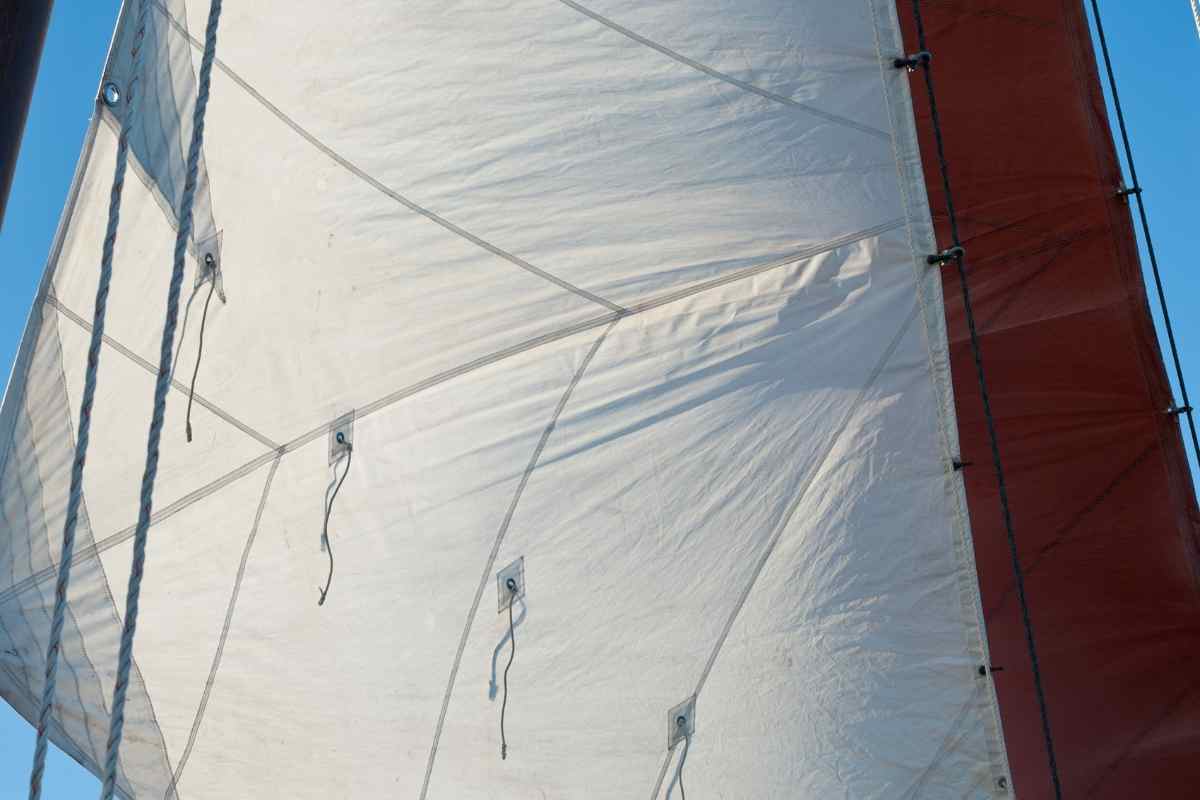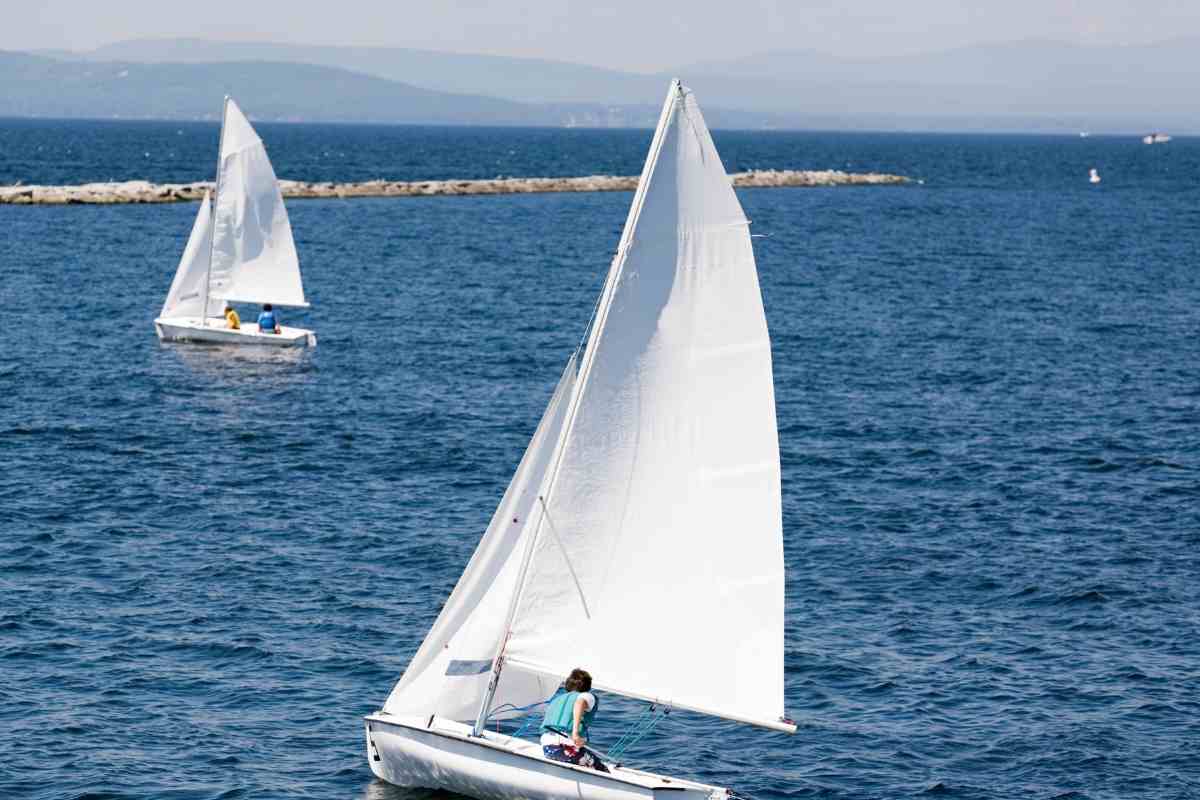What Is The Best Material For A Sail?
The sails that you choose for your boat may be one of the most important decisions you have to make. There are a number of options to choose from, each with their own advantages and disadvantages. It is very important that you educate yourself about your options before making a purchase.
What Is The Best Material For A Sail?
Most sails are made of polyester or nylon, but the higher-end sails may be made of aramid, Ultra PE, or carbon fiber. Any of these options may work for you. Choosing the right one for your needs depends on balancing cost, durability, weight, and other factors.
If you are trying to decide which sails to buy, you have a number of materials to choose from. Here’s what you need to know about what options are available to you.
Most Commonly Used Sail Materials
Polyester
Polyester has been used as a sail material for a long time because it is quite inexpensive while still being strong and durable. Polyester is woven together into a sail cloth called Dacron.
This material is specifically designed for sailboats and has been popular as a material for sails for many years, ever since Dupont developed it. Over the years, there have been many other sailcloths developed using polyester weaves, but Dacron remains an industry-standard that is still quite affordable.
Polyester remains a highly desirable material for sail cloth because when it is heated and finished properly, it shrinks dramatically. When it’s woven tightly and then shrunk so dramatically, you are left with a very tight weave that is quite stable and durable under a variety of conditions.
You get this without having to add extra coatings, which increases the cost and typically are not as durable over time. Polyester may be especially durable against UV damage, so if you sail in a very sunny place or want to be able to leave your sails uncovered sometimes, this could be a good option for you.
Nylon
Nylon is quite strong considering how light it is, doesn’t cost too much, and is quite stable against UV rays. It is very stretchy, which means that it is not suitable for making primary sails. However, in the construction of downwind sails, this stretchiness is actually beneficial.
This is why nylon is very often the material used to construct Spinnakers, whether they are a part of the boat or deployed as needed. Nylon has an additional advantage of being able to hold color well and easily, which makes it a beautiful choice for decorative Spinnakers. Nylon is generally quite durable, but it is very vulnerable to chlorine. Be careful to never wash nylon sails in chlorine or put them into a swimming pool.
Aramid
Tthese fibers are very light, strong, and resistant to breakage. They are often selected for racing sails, where lightweight durability is of the essence. It should come as no surprise that these strong, durable sails are not the cheapest option around.
They are not overwhelmingly expensive, but they are generally more expensive than nylon or polyester sails. Aramid fibers may be blended with other carbon fibers to increase the strength and decrease the stretch. If you need the best speed from your sails and aren’t afraid to pay a bit more for it, this might be what you choose.
Ultra PE
Originally, this sail was introduced in competition with Kevlar. It is a highly processed polyethylene. The UV resistance is superb in these fibers, and they are resistant to stretching and breaking as well.
While it may elongate a bit when sustaining a high load, it is generally one of the toughest and strongest choices. It is often used on very large sailboats where you don’t mind a bit of extra weight in exchange for greater durability and strength.
This is one of the most expensive options, but it is one of the toughest and best choices for cruising sailboats.
Carbon Fiber
Carbon fiber is frequently used in racing sailing and is also popular in cruising. This type of sail does not give in to damage from the sun and it doesn’t stretch easily.
It is, however, quite vulnerable to being folded along hard lines, especially if it is repeatedly folded. If you are considering carbon fiber, you must be very confident about your sailing abilities and know how to avoid creating hard creases in the sail. After only a few hard folds your sail could be permanently ruined.
What To Look For In Sail Material
Whatever sail you decide on, you will make compromises to choose the aspects that are most important for your needs. Here are some of the things to look for in a sail to help you decide which aspects matter to you.

Durability in a Harsh Environment
The water can be a harsh place for your sails. Whether you’re sailing on the ocean or in freshwater, you will surely put your sails through some difficult conditions. Sails that can stand up to harsh weather, wind, and waves can keep working for you longer.
If you live in a particularly harsh environment, such as frequently keeping the sails where there may be salt spray, durability will be even more important to you. On the other hand, if you’ll be taking your boat out in freshwater most of the time and you pull it out for storage, having sails that are durable in harsh weather may not be as important to you.
Reasonably Affordable
Depending on how big your boat is, you probably have a fair amount of sails to purchase. Boats that have a jib or two, a main, and a Spinnaker have quite a lot of square footage of sail to purchase.
Remember that no matter how well you take care of your sails, they will still need to be replaced every so often, so this won’t be a one-time expense. Therefore, while you do want the best sails you can afford, you also can’t afford to spend more than you have to.
Lightweight
Your sails can add up to a fair amount of weight on your boat. Choosing lightweight sails reduces the impact that your sails will have. However, lighter sails typically are not as strong.
The right sails for your needs will be a balance between light and durable. Keep in mind that when you are selecting the material for some sails, such as the Spinnaker, sails that are light are more important than sails that are strong.
Sails that will only be used under light conditions and downwind sailing do not need to be as tough as sails used for primary sailing.

How to Maintain Sails Well
No matter how well you take care of your sails, you will need to replace them periodically. That said, there are absolutely things that you can do to increase the life of your sails.
Here are a few things that you can do to make sure that you won’t need to buy new sails any more than absolutely necessary.
Rinse as Often as Possible
Salt is very hard on practically all materials, so it is important that you rinse the salt off of your sails as often as possible. Your sails will not always be exposed to salt. For instance, if you are out on a lake or on a very calm day, you may not need to worry as much about rinsing off your sails.
It is not practical for sailors to rinse their sails every time they go out, even if you do encounter a lot of spray. However, it’s good to keep in mind how valuable it is for your sails to be rinsed.
It’s a good idea to unfurl your sails in a light rain if possible to give them an opportunity to be rinsed off and to run a hose over then every so often.
Avoid the Sun
There is nothing that you can do to keep your sails from being exposed to the sun when you are underway on a sunny day. However, whenever you can protect your sails from the sun, it’s essential that you do so.
Use sail covers when the boat is at rest. Be sure that sail covers are UV resistant so that your boat is not exposed to any sunlight at all while it is resting.
The sun is one of the most corrosive elements for your boat, so no matter how well the material can stand up against UV, it’s best to protect your sails as much as possible.
Don’t Let Your Sails Luff or Slap
When your sails are slapping together and against the deck, they are breaking down. Some sails are especially vulnerable to this kind of treatment, but no sail benefits from being allowed to slap.
It is inevitable that your sails will occasionally luff when you are determining what angle you can maintain to the wind, but you should try to get the luffing under control as quickly as possible. Otherwise, you will shorten the life of your sails.
Always Put Your Sails Away
It can be tempting to leave your sails loose when you are anchored overnight on a calm day and about to sail in the morning. Most of the time, there probably won’t be any negative consequences to allowing your sails to be loose overnight.
However, if conditions should suddenly change, leaving your sails loose absolutely can have consequences. A sudden breeze can luff the loose sails and even cause them to drape overboard.
Choose Sail Material Carefully
Don’t be sold on the newest sail that everyone is trying to sell you at the boat sale. By being careful and deliberate about your decision-making, you can choose the best sails for your boat without spending a fortune.
Just be sure that you keep in mind exactly what it is that you need your sails to do for you and you will likely make a very reasonable and affordable choice that does a great job for you.
